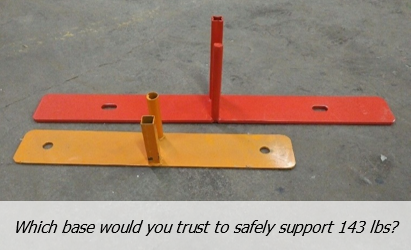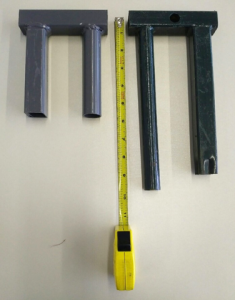Avoiding the “Fence Only Trap”
September 14, 2018Over the last decade, an increased focus on public safety, liability and insurance, and security has resulted in overall stricter safety regulations for Canadian construction sites. One of the most basic requirements of any construction project is the creation of a barrier between the live site and members of the public.
In Ontario, regulations state that “if work on a project may endanger a person using a public way, a sturdy fence at least 1.8 metres in height shall be constructed between the public way and the project[1]”. Similarly, regulations exist that require barriers around excavations and demolition sites.[2]
The Argument for Surpassing Current Regulations
Unfortunately, the ambiguity of the regulations relating to site containment often leads to the assumption that merely putting up temporary fence will meet a contractor’s minimum requirements. This is what we call the “Fence Only Trap”.
The challenge with today’s urban construction activity is that it must coexist with businesses, residences and institutions all located within an extremely close proximity. This means that members of the general public are frequently in direct contact with the site. Usually, the temporary fence is the only thing separating them from a live and potentially dangerous project. Oftentimes, these temporary barriers are inadequate and may themselves pose a safety hazard.
Similar to any piece of equipment on a site, there should be careful consideration taken as to whether the temporary fence system meets industry standards and criteria. Equally important is that the system has been installed properly and is being used according to the manufacturer’s specifications.
That being said, total peace of mind is not often gained simply by meeting minimum requirements. Regrettably, Canada’s standards regarding temporary fence still lag behind those of its global counterparts. As a result, cheap, non-spec fencing is being dumped into the North American markets at an alarming rate – often at great risk to public safety.
The Australian Standard “AS 4687-2007 Temporary fencing and hoardings” is generally regarded in the industry as a benchmark to ensure temporary fence panels meet the demands required by the typical construction project. Under AS 4687-2007, 4.2, three (3) free-standing fence panels shall be capable of supporting a 65 kg (143.3 lb) load that is applied centrally with a control arm extended 400 mm (15.75”) from the panel.
Better Components, Better Foundation
In the construction industry, it’s the foundation that matters and not just what is visible. Likewise, the fence base is an often overlooked but critical component when it comes to ensuring the support and overall stability of a temporary fence system. In fact, a major failing with inferior fence systems is that the base and cap components are inadequate, resulting in unstable fence that can cause serious – albeit readily preventable – accidents. For example, a member of the public in Toronto, Ontario, found himself cut and bruised after trying to shield his son from a falling fence panel installed near a children’s hospital[3]. Incidents like these are not uncommon.
Non-spec fence components may be deficient in the following ways:
- The bases are often too light, failing to provide adequate stability
- The base and cap components are not adequately sized to properly stabilize a 6-foot or 8-foot tall fence panel

In a controlled, in-house test, Modu-Loc Fence Rentals concluded that for any fence system to meet regulation AS 4687-2007, it would require a metal base weight equal to at least 14 lbs and a base length of at least 32”.
Caps are another crucial but often disregarded component in the fence system. If caps are not installed or panels are not secured together with alternate means, the fence system is not complete, and fence line stability is severely affected. Industry standards suggest a cap length of at least 7” in order to properly support the panel and compensate for any elevation changes in the terrain.
Mitigating Risk with Add-Ons
Another example of the “Fence Only Trap” is the failure to properly stabilize or secure temporary fence with the appropriate accessories. Certain site conditions necessitate the use of ancillary products to ensure optimal stability and mitigate risk.
For instance, home builders often hang banners on the fence to promote a new development. Regrettably, they may do so without considering the increased wind load. While this may not violate any regulations related to site containment, it does pose a safety risk as the fence is now more prone to blowing over. Ideally, stability add-ons such as concrete blocks or sandbags would be used to counteract this effect. Unfortunately, current industry standards do not require that such measures be taken.
Similarly, care should be taken on sites located near pedestrian walkways or on uneven terrain. Products to mitigate trip and fall risks should be employed when a pedestrian route runs along a construction site. Uneven terrain demands careful and deliberate installation to ensure optimum stability of the fence line. However, the “Fence Only Trap” fosters the belief that temporary fence alone is enough to protect the contractor from liability.
Conclusion
Protecting members of the public from the inherent dangers of a live construction site starts with proper site containment. Vague and poorly outlined regulations around temporary fencing in Canada have only served to downplay the importance of a sound construction fence system. With no Canadian standards to set minimum requirements for vital fence system components, the industry has been lured into the “Fence Only Trap”. This has resulted in the use of incomplete or low-grade fence systems that fail to maintain – or in some cases, actually threaten – the safety of the public.
Choosing a substandard fence system puts you at risk of liability for failure to perform proper due diligence. In addition to complying with Canadian and provincial construction regulations, you should always assess whether the specifications of your selected fence system meet your needs. Consider developing your own internal minimum requirements for temporary fence, as not all temporary fence is created equal. A complete and well-designed fence system will not only protect you in the event of a lawsuit, but it will also optimally perform the job it is intended to do – protecting members of the public.
[1] Regulation O. Reg. 213/91, s. 65 of the Occupational Health and Safety Act, R.S.O. 1990, c. O.1. https://www.ontario.ca/laws/regulation/910213#BK16
[2] Regulation O. Reg. 213/91, s. 233 (4) of the Occupational Health and Safety Act, R.S.O. 1990, c. O.1. https://www.ontario.ca/laws/regulation/910213#BK16
[3] http://toronto.ctvnews.ca/mobile/man-cut-bruised-after-he-protects-child-from-falling-construction-fence-near-hospital-for-sick-children-1.2942494
We’re here to answer any questions you may have.



 Canada - EN
Canada - EN Canada - FR
Canada - FR United States
United States





